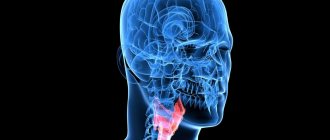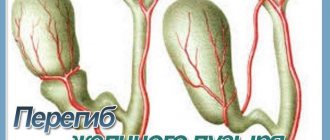Rating: 5/5 (1)
Most women are familiar with the concept of gestosis, that is, toxicosis that occurs in the last months of pregnancy. This problem can become more complex and develop into a more severe and health-threatening condition known as preeclampsia in pregnancy . If you know the symptoms of this problem and take timely measures to cure it, you can avoid the development of eclampsia, a more severe form of the disease that poses a danger to the life of the mother and child.
What is preeclampsia in pregnancy and risk factors
Preeclampsia is a pathology that occurs during pregnancy, in which blood pressure rises, edema forms, and protein appears in the urine. Every year more and more pregnant women suffer from this disease. Today, the incidence of preeclampsia cases is 7-15%.
Women who are prone to arterial hypertension and predisposed to diseases of the cardiovascular system are at greatest risk
CLASSIFICATION OF THE DISEASE
The main types of eclampsia disease:
- cerebral (high risk of stroke);
- renal (accompanied by renal colic);
- hepatic (metabolic processes in the body slow down);
- comatose (the most severe form of the disease, at first asymptomatic, but the peak occurs in the form of hemorrhage in the brain, followed by loss of consciousness and falling into a coma).
Basic forms:
- atypical
(diagnosed during prolonged, difficult labor; the patient experiences cerebral edema, increased intracranial pressure, and hypertension); - typical
(usually diagnosed in pregnant women with a tendency to increase blood pressure; accompanied by swelling of the tissues of internal organs; specialists diagnose increased intracranial and blood pressure).In both situations, emergency assistance from a specialist is required! Only an experienced neurologist can determine the form or type of eclampsia based on diagnostic results. The examination of the patient is usually carried out in a hospital setting.
Preeclampsia during pregnancy - consequences and risks
The likelihood of developing preeclampsia usually increases as pregnancy progresses. Most often it occurs in the 2nd or 3rd trimester .
Why is this condition dangerous for mother and child? High blood pressure leads to the fact that the blood supply to the placenta deteriorates, the fetus does not receive enough oxygen and nutrients, which adversely affects its normal development. For the mother, preeclampsia is also extremely dangerous - it impairs the functioning of the kidneys, liver and central nervous system, including the brain.
In especially severe cases, this disease can cause loss of consciousness due to severe convulsions, and sometimes even hemorrhage in the liver. If the cramps are very severe, the attacks may follow one after another, and the pregnant woman may not regain consciousness for hours. This phenomenon is extremely dangerous, since the result of such deep attacks can be coma, accompanied by cerebral edema, which often leads to a stroke.
Seizures are not a necessary symptom of preeclampsia. Not everyone gets them. Some women may only experience blurred vision and headaches. A pregnant woman falls into a coma only when there is a sharp jump in blood pressure. It is for this reason that preeclampsia syndrome should be carefully monitored and timely measures taken to prevent seizures.
GENERAL INFORMATION
Eclampsia is a critical manifestation of gestosis
, which occurs in pregnant women in the third and fourth trimesters. For pregnant women, eclampsia is dangerous because quite often this disease can manifest itself without visible symptoms, but with rapid bleeding in the brain with the threat of falling into a coma. That is why, when the first signs of eclampsia develop, you should urgently contact a neurologist, since there is a high probability of pregnancy failure and death.
This disease occurs in 1-2% of cases when toxicosis occurs in the late stages of gestation. Less often - directly during childbirth, and in 1% - in the first day or two after it. Quite often the disease occurs in women who give birth for the first time at the age of 40+.
Quite rarely, eclampsia is diagnosed in children in the first years of life. Due to the age of the patient, it is quite difficult to diagnose and can be disguised as other neurological ailments. The treatment of eclampsia in a pregnant woman should be handled strictly by a neurologist. Providing first aid is also possible by a resuscitator, but in the future examinations by a gynecologist, neurosurgeon, and therapist are required.
Causes of preeclampsia in pregnant women
Currently, science has not found an explanation for preeclampsia in pregnant women. It is only known that this disease almost always occurs after the twentieth week of pregnancy.
Risk factors that contribute to the development of this condition have been identified
- first pregnancy;
- age (less than 20 or more than 35 years);
- arterial hypertension;
- genetic predisposition;
- diabetes;
- bleeding disorders;
- kidney disease;
- autoimmune diseases;
- bad habits;
- frequent stress;
- poor nutrition;
- obesity.
In addition, the likelihood of developing preeclampsia increases if a woman is carrying twins or triplets, or if the problem has already occurred in a previous pregnancy.
Factors contributing to the occurrence of pathology
Eclampsia is considered as a result of preeclamptic condition and severe gestosis. Modern medical science adheres to several theories of the occurrence of this pathology (there are about 30 of them), but the exact cause has not yet been identified. The most common provoking factors are considered to be the following:
- fetoplacental insufficiency, manifested in dysfunction of the placental barrier;
- infectious diseases of various etiologies;
- genetic diseases, gene mutations in which the mother’s body reacts to the embryo as a foreign body;
- endocrine diseases (obesity, diabetes, thyroid diseases and others);
- antiphospholipid syndrome;
- history of chronic hypertension;
- cases of preeclampsia (eclampsia) in previous births;
- genetic predisposition (maternal);
- late age (after 40 years);
- multiple pregnancy;
- stress factor.
Symptoms of preeclampsia in pregnant women
Signs of this disease may include:
- visual impairment - blurred vision, blurred vision, dilated pupils, black spots before the eyes;
- sleep problems – insomnia or constant drowsiness;
- fatigue, dizziness, headaches that do not go away even with
- use of analgesics;
- pressing pain in the chest area;
- nausea, sometimes vomiting;
- swelling in the arms or legs, itching, hyperemia;
- increased temperature of the extremities (hyperthermia);
- dry cough, runny nose, hearing loss;
- frequent and shallow breathing.
If two or more of these symptoms appear, you should urgently seek medical help . If you do not treat this problem with due attention, convulsions will begin to occur, often leading to coma, which is extremely dangerous for the health of the woman and the life of the child.
Causes and course
Despite the fact that eclampsia was described in ancient medical treatises, what exactly causes it is not known. In the same way, it is quite difficult to say what exactly led to the development of preeclampsia that preceded it, since the exact cause of this condition is also not completely established. Some experts cite insufficient and unsatisfactory nutrition, high levels of fat in the female body, or insufficient blood flow in the uterus among the causes of preeclampsia.
Main features
Signs of preeclampsia include:
- main: edema, protein in urine, arterial hypertension;
- additional: rapid weight gain, dizziness, severe headaches, severe nausea and vomiting, abdominal pain, changes in reflexes, decreased urine volume, visual disturbances, pain in the epigastric region.
But don’t be scared when reading these lines, since edema during pregnancy does not at all mean the presence of preeclampsia. Pregnancy is characterized by some swelling. But, if swelling remains even after a long rest and is also combined with the described symptoms and is accompanied by high blood pressure, this is an alarm bell.
The exact reasons why this disease develops have not been established, but there are some substantiated versions:
- fetal rejection due to immunological changes in the woman’s body;
- abnormal placental blood flow in the uterus with enlargement of the spiral arteries
- endocrine system disruption;
- tendency to form clots in the blood in a latent form. The process develops with a large amount of the hormone thromboxane 2;
- an imbalance between the cerebral cortex and subcortical structures, which contributes to poor blood flow through the vessels;
- in the last stages of pregnancy, edema often occurs, which is associated with a lack of folic acid and B vitamins;
- genetics on the female line.
There are experts who note preeclampsia developing in obese women due to an insufficiently balanced diet.
Eclampsia and preeclampsia do not have clearly defined causes. One of the theories for the occurrence of toxicosis during pregnancy is adaptogenic. According to her, a woman’s body fails to reconfigure and accept the changes associated with the development of another life in her. Superficial implantation of the placenta can also cause the development of toxicosis.
With insufficient oxygenation, hypoxia occurs, to which the woman’s immune system reacts, trying to reject the “wrong” tissues of the developing embryo. Whatever the reason for the development of the pathological condition, its course always poses a danger to the mother and child. Risk factors have been identified based on clinical studies and observations. Among them are:
- the woman's age is less than 15 and more than 35 years;
- history of abortion;
- endocrine diseases;
- problems with excess weight;
- chronic infectious and inflammatory diseases.
The release of hormones that accompanies the onset of pregnancy provokes changes in the vascular system.
A surge in hormonal levels during pregnancy provokes an exacerbation of existing diseases and changes in the vascular system. Transformation of the vascular membranes leads to a decrease in their functionality, the appearance of lesions in the kidneys, brain and liver, and pinpoint hemorrhages. Persistent hypertension and multiple organ deficiency develop.
Diagnosis and treatment of preeclampsia in pregnant women
Any pregnant woman should be regularly examined by a doctor . At each examination, blood pressure is checked, weight gain is measured, and urine and blood tests are also examined.
To identify signs of preeclampsia in time, you need to take the following tests :
- blood test for hemostasis;
- tests to check liver enzyme levels;
- tests indicating the content of uric acid, urea and creatinine in the blood;
- urine test - if it contains protein, then there is a high probability of preeclampsia.
Unfortunately, preeclampsia cannot be treated . You can only keep it under control, and also prescribe therapy that will alleviate the condition of the sick woman.
In mild forms of the disease, the pregnant woman is prescribed bed rest, with regular visits to the doctor. It is recommended to avoid heavy physical work and stress, reduce walking to a minimum and walk less, and completely exclude any sports. Reducing physical activity helps increase blood circulation in the uterus, resulting in improved fetal health.
If preeclampsia is severe , the pregnant woman is hospitalized and prescribed a course of medications to lower blood pressure. Before 34 weeks, corticosteroid therapy is usually used to help the baby's lungs develop faster.
If the pregnancy has exceeded 36 weeks , surgical delivery may be indicated for severe preeclampsia. This is already a long enough period for the fetus to exist outside the woman’s womb without unnecessarily endangering the mother’s health.
Severity
The likelihood of a risk to the health and life of the expectant mother and fetus depends on the characteristics of the main signs of preeclampsia.
Light degree:
- blood pressure – 140-150/90-100 mm Hg. Art.;
- protein in urine – up to 1 g/l;
- swelling of the legs.
Moderate:
- blood pressure – 150-170/110 mm Hg. Art.;
- protein in urine – 5 g/l;
- creatinine in the blood – 100-300 µmol/l;
- swelling on the anterior abdominal wall and arms.
Severe degree:
- blood pressure – 170/110 mm Hg. Art.;
- protein in urine – more than 5 g/l;
- creatinine in the blood – more than 300 µmol/l;
- swelling of the nasal and facial mucosa;
- changes in vision and abdominal pain.
HELLP syndrome in pregnant women
If preeclampsia is not treated promptly, it can lead to a complication called HELLP syndrome. It is characterized by very high maternal and perinatal mortality.
It is characterized by symptoms such as: vomiting, severe cutting pain in the upper abdomen, an aggressive emotional state, attacks of dizziness, and weakness in the body.
The danger of this syndrome is that its signs can only be noticed if the woman is more than 35 weeks pregnant.
When this HELLP syndrome occurs, the symptoms of preeclampsia sharply intensify, which is fraught with the development of the following disorders in a pregnant woman:
- destruction of red blood cells in the blood (hemolysis);
- decreased platelet levels (thrombocytopenia);
- increased activity of liver enzymes.
Sometimes HELLP syndrome can appear after the birth of a child . In this case, the doctor prescribes therapy using blood pressure-lowering drugs, as well as drugs to prevent seizures. Sometimes a blood transfusion may be needed. If the syndrome is detected before birth, the only measure to save the woman’s life is to terminate the pregnancy by caesarean section.
Diagnostics
Differential diagnosis of preeclampsia and eclampsia must first be carried out with an epileptic seizure (“aura” before the attack, convulsions). Also, these complications should be distinguished from uremia and brain diseases (meningitis, encephalitis, hemorrhages, neoplasms).
The diagnosis of preeclampsia and eclampsia is established based on a combination of instrumental and laboratory data:
- Blood pressure measurement. Increasing blood pressure to 140/90 and maintaining these numbers for 6 hours, increasing systolic pressure by 30 units and diastolic by 15.
- Proteinuria. Detection of 3 or more grams of protein in the daily amount of urine.
- Blood chemistry. An increase in nitrogen, creatinine, urea (kidney damage), an increase in bilirubin (red blood cell breakdown and liver damage), an increase in liver enzymes (AST, ALT) - liver dysfunction.
- General blood analysis. An increase in hemoglobin (a decrease in the volume of fluid in the vascular bed, that is, blood thickening), an increase in hematocrit (viscous, “stringy” blood), a decrease in platelets.
- General urine analysis. Detection of protein in urine in large quantities (normally absent), detection of albumin (severe preeclampsia).
Eclampsia in pregnant women
In one woman out of two hundred suffering from preeclampsia, this disease can develop into a more serious condition - eclampsia , which is characterized by frequent attacks of convulsive seizures, sometimes progressing into a coma. Of course, this condition poses a huge danger to both the mother and the developing fetus.
The main symptoms of eclampsia: edema, hypertension, protein excretion in the urine, symptoms of damage to the central nervous system—convulsions and coma.
An approaching attack can be identified by sharp headaches, blurred vision and painful cramps in the upper abdomen. But it is not always possible to predict the next seizure - more often they occur without any symptoms preceding them.
For the treatment and prevention of eclampsia, rest and lack of stress on the body and nervous system are prescribed and to minimize the risk of new attacks. The only way to avoid seizures is to be monitored at all times in a medical facility.
For the prevention and treatment of eclampsia during pregnancy in women who have preeclampsia, magnesium sulfate is recommended.
Since in the case of existing preeclampsia the risk of developing eclampsia is very high, any pregnant woman with this problem should undergo regular examinations with a doctor, which will help . If the condition worsens and there is a likelihood of developing eclampsia, the issue of early delivery will be decided.
Emergency care for eclampsia
An attack of eclampsia, unfortunately, sometimes occurs outside the hospital, when a pregnant woman is surrounded by people without medical education. Meanwhile, first aid in such a situation is very important. During convulsions, a pregnant woman can be injured and aspirate (choke) vomit. After the emergency room is called, it is necessary to perform simple measures: lay the sufferer on her left side, after the attack, clear the oral cavity of vomit, mucus, blood and, if possible, calm her down. In the room where the patient is located, all sounds should be muffled and a subdued light background should be created. You cannot use force to stop the seizures - the attack will go away on its own.
Eclampsia always involves a complex of emergency resuscitation measures, so the pregnant woman is hospitalized. Any strong sound or light stimuli can provoke a convulsive attack, so special conditions are created in the room where the patient is located, excluding loud sounds and bright lighting. And, of course, the pregnant woman must be protected from excessive emotional arousal, which also contributes to increased convulsive activity. Sedatives are used.
The main goal of the measures taken is to prevent the negative irreversible consequences of an existing convulsive attack and prevent the occurrence of new ones. Conducted:
— Infusion of magnesium sulfate solution (intravenous, drip). Used to eliminate generalized vascular spasm that provokes hypertension. At the same time, blood pressure and cardiac activity are monitored.
— The volume of circulating blood is replenished by administering blood products, plasma, isotonic solution, glucose and other liquids.
— Correction of hypertension with the help of antihypertensive drugs (clonidine, Corinfar, dopegit and the like).
— Prevention of swelling of brain tissue. Severe edematous syndrome with a tendency to increase is relieved by drugs that enhance diuresis (Lasix, furosemide).
- If eclampsia has reached the final stage - coma - intubation and connection of the patient to a ventilator is necessary.
Severe forms of eclampsia are treated by a team of specialists - a resuscitator, a neurosurgeon and an obstetrician-gynecologist.
Prevention of preeclampsia in pregnant women
Some measures aimed at eliminating the risk factors for this disease will help reduce the likelihood of developing preeclampsia. For example, if you are overweight, you should consider losing weight before a planned pregnancy.
If you have hypertension, undergo treatment to normalize your blood pressure. Women suffering from diabetes will need to visit an endocrinologist and consult about methods for a successful pregnancy.
Other recommendations to help minimize the risk of developing preeclampsia during pregnancy:
- Regularly visit a gynecologist to monitor the progress of pregnancy. If your doctor has given you a referral to other specialists, be sure to visit them. If your health worsens, you should consult a doctor outside of the regular deadline, i.e. unscheduled.
- If your doctor has prescribed any medications, do not skip taking them.
- Follow all recommendations and prescriptions of the doctor regarding daily routine, diet, rest, etc.
- According to some research data, a course of taking vitamin complexes, calcium supplements and small doses of aspirin can reduce the possibility of preeclampsia. But making a decision on such measures on your own is highly discouraged - you should first consult a gynecologist.
What is the treatment?
Treating toxicosis with medication is not effective. The only solution for severe preeclampsia is delivery. The earlier the pathology appears, the more difficult its course and treatment. Progressive gestosis of early pregnancy requires its termination. With moderate late-onset preeclampsia, they try to maintain the pregnancy at least until the 37th week.
To do this, measures are taken aimed at reducing peripheral vascular resistance, reducing edema, restoring blood pressure levels and kidney function. Medicines are not effective for treating this condition. You can relieve symptoms and lower blood pressure by administering magnesium sulfate, anticonvulsants and sedatives. Bed rest is advisable.
Treatment requires a stay in a hospital, where special conditions are created: there is no harsh light, no noise, the woman in labor needs complete rest so as not to provoke convulsions. The patient must be examined by an obstetrician and resuscitator.
To extinguish the symptom use:
- sedatives to relieve anxiety;
- intravenous solution of magnesium sulfate;
- to prevent seizures, the drugs Droperidol, Diphenhydramine, Relanium are used intravenously;
- replenishment of circulating blood is required;
- blood pressure control, medications Dopegit, Clonidine, Atenolol;
- if the pathology appeared before the 34th week of pregnancy, then therapy is necessary for the maturation of the fetal lungs;
- in the absence of improvement and progression of the disease, a decision is made on urgent delivery.
Video about preeclampsia in pregnant women
This video explains in detail about preeclampsia during pregnancy, as well as its complication - eclampsia. You will learn about the signs and causes of this condition, risk factors and treatment options.
The greatest danger of preeclampsia is that in some cases it hardly manifests itself at all in the initial stages. The woman does not feel much discomfort, attributing the unpleasant sensations to gestosis, but meanwhile the disease continues to develop, threatening to develop into a more severe form. Have you encountered a similar condition? What sensations did you experience during this process and what treatment methods were used? Share your experience in the comments.
Organization of proper nutrition
Preeclampsia during pregnancy requires adjustments to your daily routine and diet. When pathology develops, it is necessary to follow a diet, the main task of which is to reduce symptoms and eliminate swelling. It is recommended to follow the correct drinking regime, since edema is often caused by highly carbonated or sweet drinks, strong tea or coffee.
The following drinks are allowed:
- mineral waters without gases;
- freshly prepared and only natural juices, fruit drinks;
- various natural rosehip decoctions;
- green tea.
It is also recommended to use decoctions based on medicinal herbs that have a diuretic effect. However, before using such products, you should consult your doctor.
When you are sick, special attention should be paid to creating the right diet. Products containing large amounts of carbohydrates and salts are excluded from the menu. Such products can retain fluid in the body, which leads to the development of swelling.
It is prohibited to consume various ketchups, sausages and smoked products. Spicy foods, seasonings, mayonnaise, sweets, and pickled vegetables are also excluded.
The following foods should be included in the diet:
- fermented milk products and low-fat types of dairy products - yoghurt, kefir, fermented baked milk, yogurt;
- some fruits in minimal quantities, excluding grapes and bananas;
- vegetables cooked in a steam bath or in the oven;
- whole grain bread is allowed to be consumed in minimal quantities;
- diuretic products - watermelons, melons, cucumbers;
- groceries – various types of cereals;
- low-fat types of meat products.
The category of prohibited products also includes fast food, natural honey, and sweet syrups.











